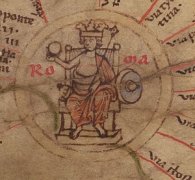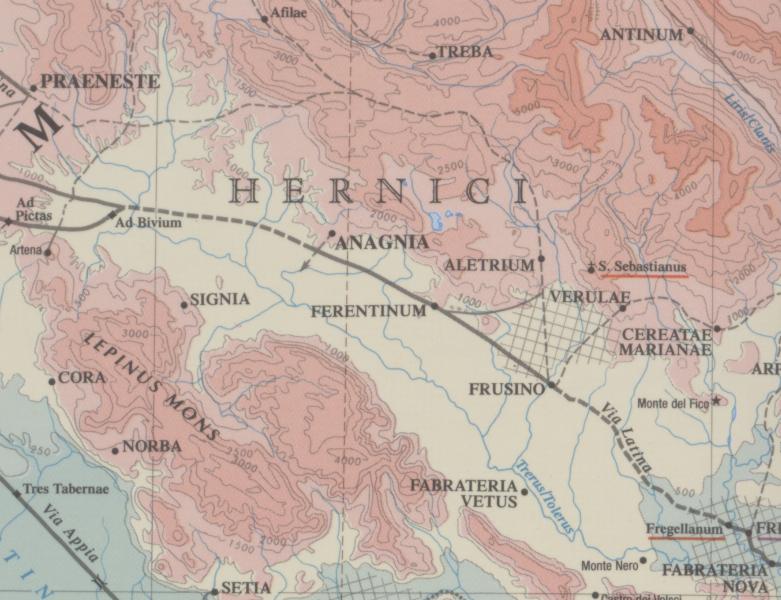
Tabula Peutingeriana – Pantalla individual
| Topónimo (simplificado): | Conpito Anagnino |
| Nombre (moderno): | Anagni |
| Imagen: |  Al detalle de la imagen |
| Topónimo antes | X Ad birium (Ad Birium) |
| Topónimo después | VIIII Ferentinum |
| Imagen alternativa | --- |
| Imagen (Barrington 2000) |
 |
| Imagen (Scheyb 1753) | --- |
| Imagen (Welser 1598) | --- |
| Imagen (MSI 2025) | --- |
| Pleiades: | https://pleiades.stoa.org/places/422908 |
| Área: | Italia |
| Tipo de topónimo: | Topónimo con símbolo |
| Cuadrícula: | 5B1 |
| Color del topónimo: | negro |
| Tipo de viñeta: | A Torre doble |
| Itinerario: | Compitum (305,1) |
| Nombres alternativos (diccionarios): | Anagnia (DNP) |
| Nombre A (RE): | Compitum Anagninum - https://elexikon.ch/RE/IV,1_793.png |
| Nombre B (Barrington Atlas): | Anagnia (43 E3 / 44 C2) |
| Nombre C (TIR / TIB /otros): |
|
| Nombre D (Miller): | Conpito. Anagnino |
| Nombre E (Levi): | Conpito. Anagnino (A,II,14) |
| Nombre F (Ravenate): | Anagnia (p. 71.41) |
| Nombre G (Ptolemaios): | Ἀναγνία (3,1,62) |
| Plinius: |
|
| Strabo: |
|
| Datación del topónimo en la TP: | --- |
| Fundamento para la datación: |
|
| Comentario al topónimo: |
PK: |
| Bibliografía: |
[1] Desjardins, Table, p. 185, col. 1-2, no. 2. |
| Última elaboración: | 08.11.2025 15:21 |
Cite this page:
https://www1.ku.de/ggf/ag/tabula_peutingeriana/trefferanzeige_es.php?id=353 [zuletzt aufgerufen am 14.11.2025]